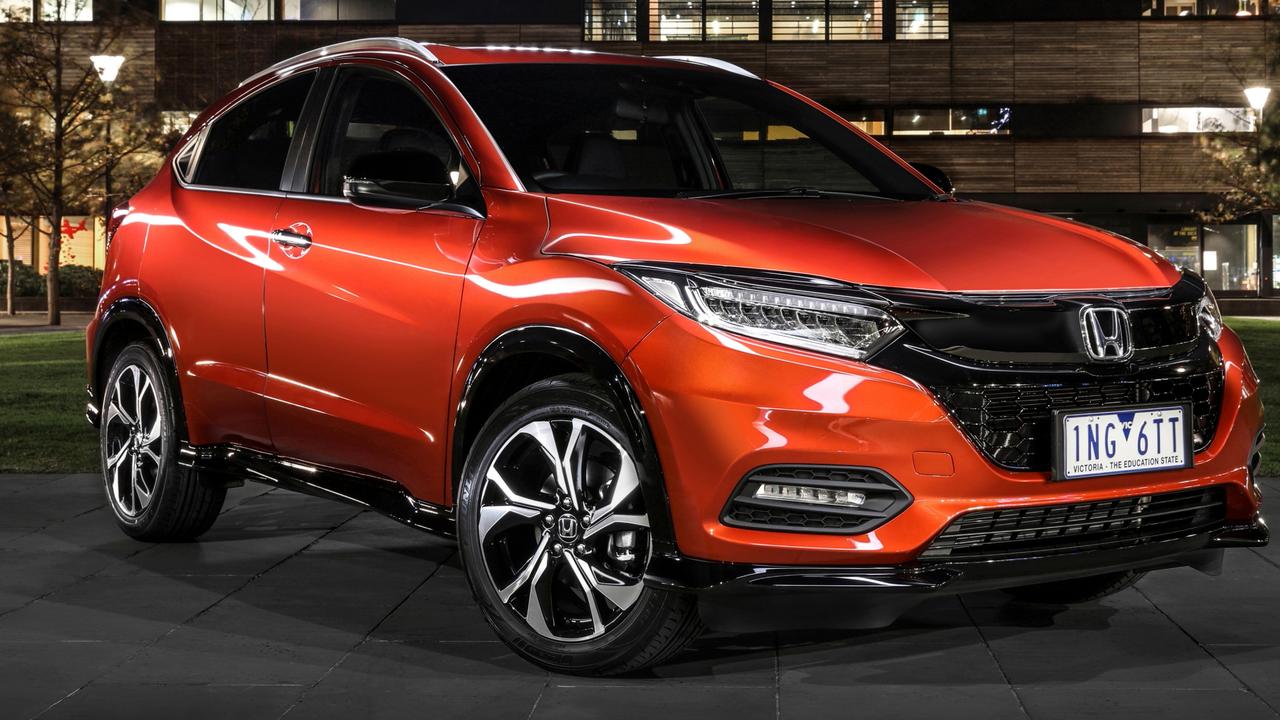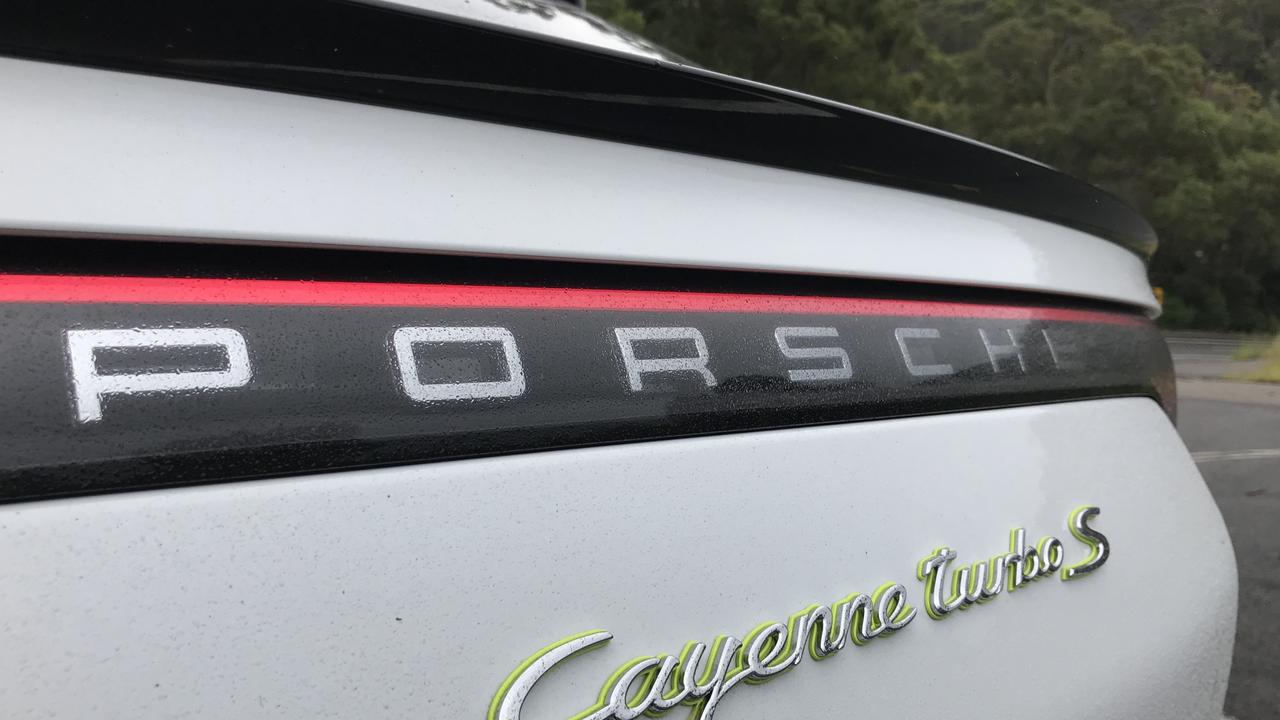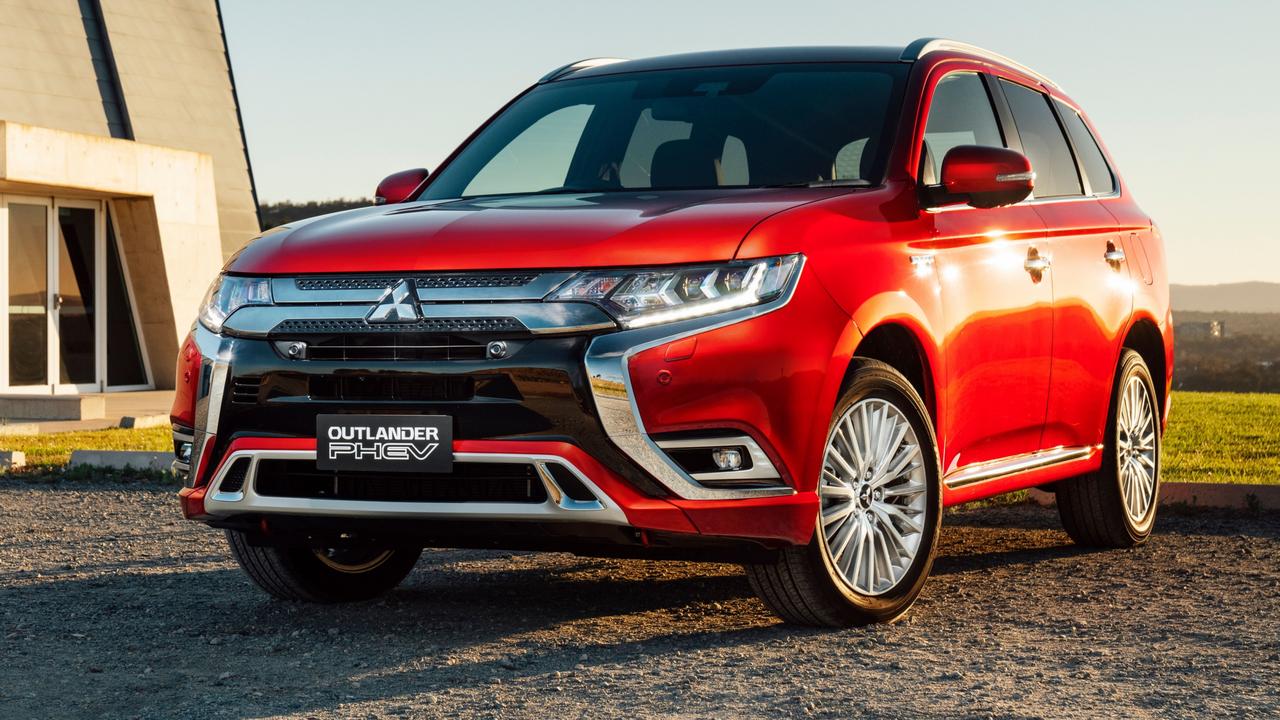Space mission: Santa Fe SUV will stop you leaving a child inside
The fourth generation of Hyundai’s seven-seat Santa Fe matches the Toyota Kluger and Mazda CX-9 for space. Its safety gear will even stop you leaving a child or pet behind.
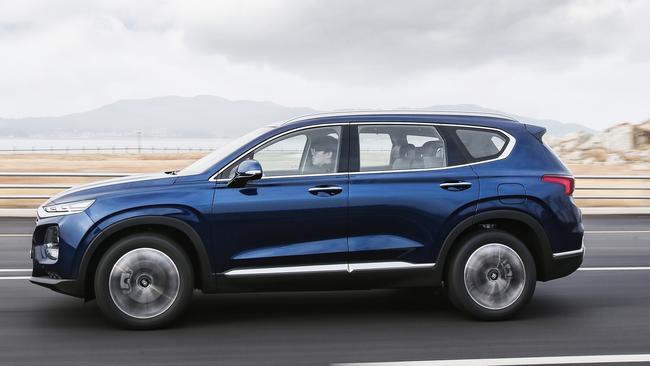
A smarter, sharper Hyundai Santa Fe finally has the metal to take it up to seven-seat SUVs such as the Toyota Kluger and Mazda CX-9.
The fourth-generation Santa Fe has been stretched by 70mm, liberating more room in all three rows. Legroom in the second and third rows still isn’t a match for a big seven-seat SUV such as the Nissan Pathfinder — but at 272mm shorter, the Santa Fe is more manoeuvrable around town.
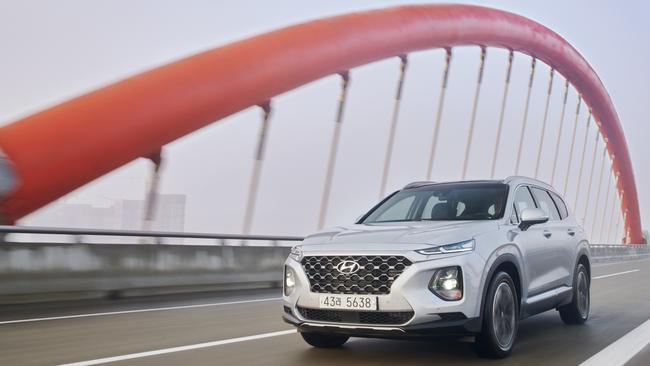
The second row now sits 18mm higher to improve outward vision and there’s a button to fold and slide the outboard seats to ease third row access.
In consideration of those stuck in the back, the third side window has grown by almost half to give the little people a better view.
A 42mm increase in head room means adults can fit in the last two seats but legroom is less than in the previous model — so they’re best reserved for occasional use, much like the Kluger and Nissan’s X-Trail.
Autonomous emergency braking is standard, even when reversing if the Santa Fe detects a car approaching from the sides, and Hyundai has fitted a safety exit assist feature that locks the doors to stop passengers leaving the car when vehicles are driving past.
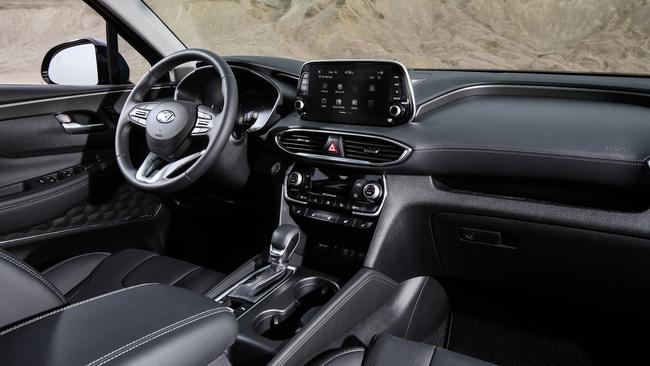
There’s also a rear occupant alert monitor intended to stop people leaving kids or pets in the third row seats. The intent is admirable but it’s worth remembering it operates with a motion sensor, so if your child is sound asleep it won’t issue an alert.
Other smart touches include a pair of USB ports in the second row, a Qi wireless phone charging pad and the ability to close all windows by holding down the remote control’s lock button for three seconds.
The front end of the Santa Fe has slim LED daytime running lights where conventional headlamps would normally reside. The headlamps themselves are now a pair of vertically stacked jobs sitting much lower on the bumper — about where you’d expect to see fog lamps. We were unable to test their performance.
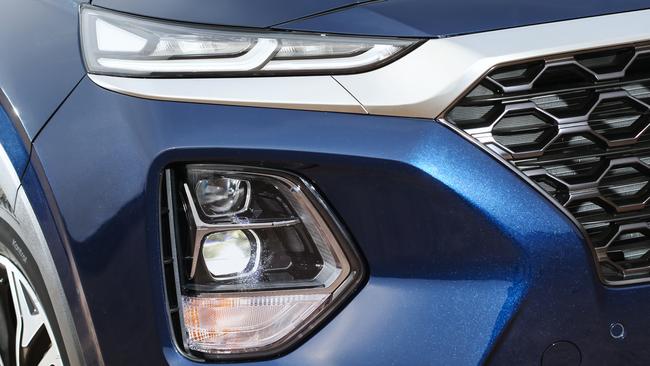
The interior is a big jump up from the existing model. The seven or eight-inch floating infotainment screens run Android Auto/Apple phone mirroring and there is a colour head-up display and digital instrument panel on top-spec versions.
In every direction, the quality of the materials has improved with an abundance of soft-touch plastics. The Highlander‘s plush, velvety rooflining looks great but will encourage little fingers to repeatedly touch it.
Hyundai will stick with the Active, Elite and Highlander grades when the new model arrives in July. Final specifications have yet to be set but the get-in price for the new Santa Fe is likely to be higher than before, as Hyundai is yet to decide whether to have a petrol model.
That means that the cheapest vehicle in the range could be the 2.2-litre diesel auto, which is likely to start from $45,000. The current 2.4 petrol auto costs $41,850.
Hyundai’s front-drive V6 will also be dropped from the range. Expect to hear about a petrol-electric hybrid version in the near future.
ON THE ROAD
The 2.2-litre turbo diesel that powers all-wheel drive versions of the existing Santa Fe has been tweaked to improve emissions. In Euro6 guise it is good for 144kW/436Nm, which is marginally down on the current model.
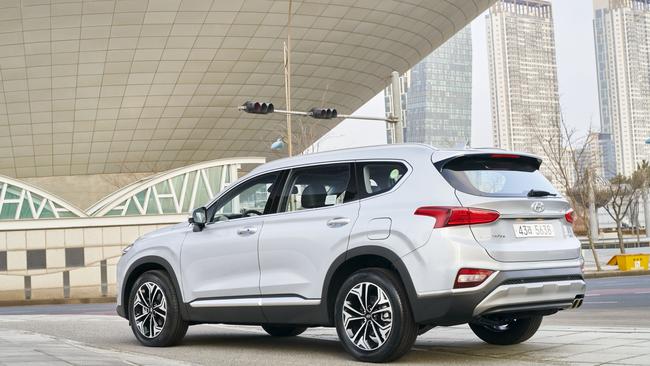
An eight-speed auto replaces the six-cog version now in use and — on the flat roads around the South Korean capital Seoul — showed no signs of hesitation or jerkiness.
Changing driving modes adjusts the power distribution between the front and rear wheels, from front-wheel drive only in Eco to a 50-50 split in Sport.
The steering is well calibrated for around-town duties and the turning circle seems close to the 11m mark of the current car.
The suspension didn’t do anything wrong on the smooth Seoul surfaces but Australian vehicles will have a local tune to ensure compliance over the ruts and potholes that make up our roads.
The second row seats are supportive and spacious, even when sitting behind a 180cm adult. They also slide to increase legroom, at the expense of that in the third-row seats.
HYUNDAI SANTA FE
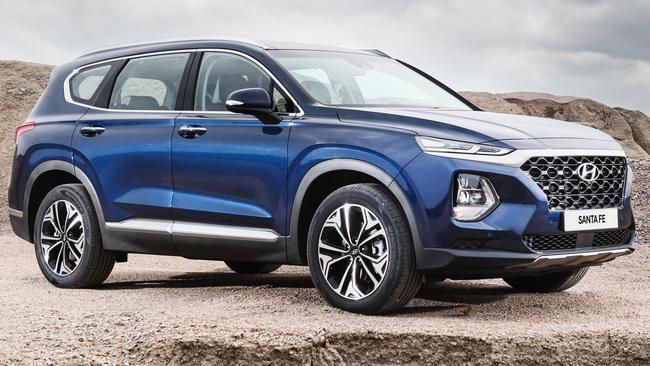
FROM $45,000 (est)
WARRANTY 5 years/unlimited km
SERVICE INTERVAL 12 months/15,000km
SAFETY Not tested, 6 airbags, AEB
ENGINE 2.2-litre 4-cyl turbo diesel, 144kW/436Nm
TRANSMISSION 8-speed auto; AWD
THIRST 7.3L/100km (est)
CARGO 625L
SPARE None (repair kit)
0-100KM/H 9.3 seconds
TOWING 2000kg braked (est)

